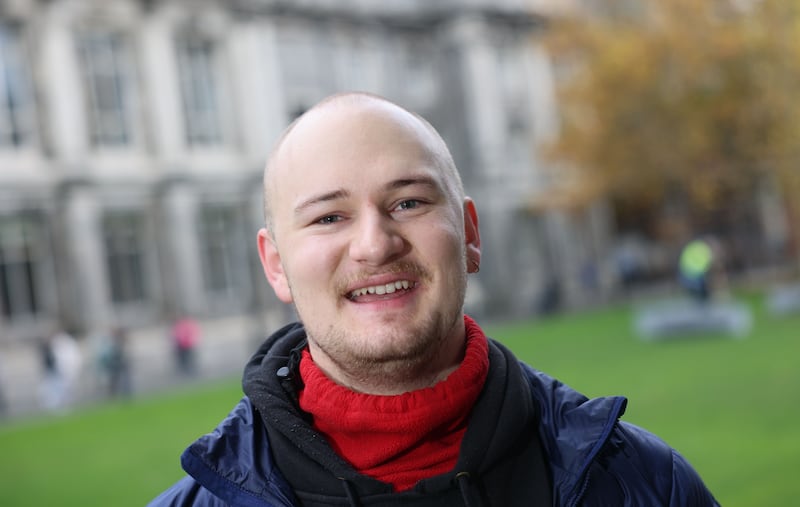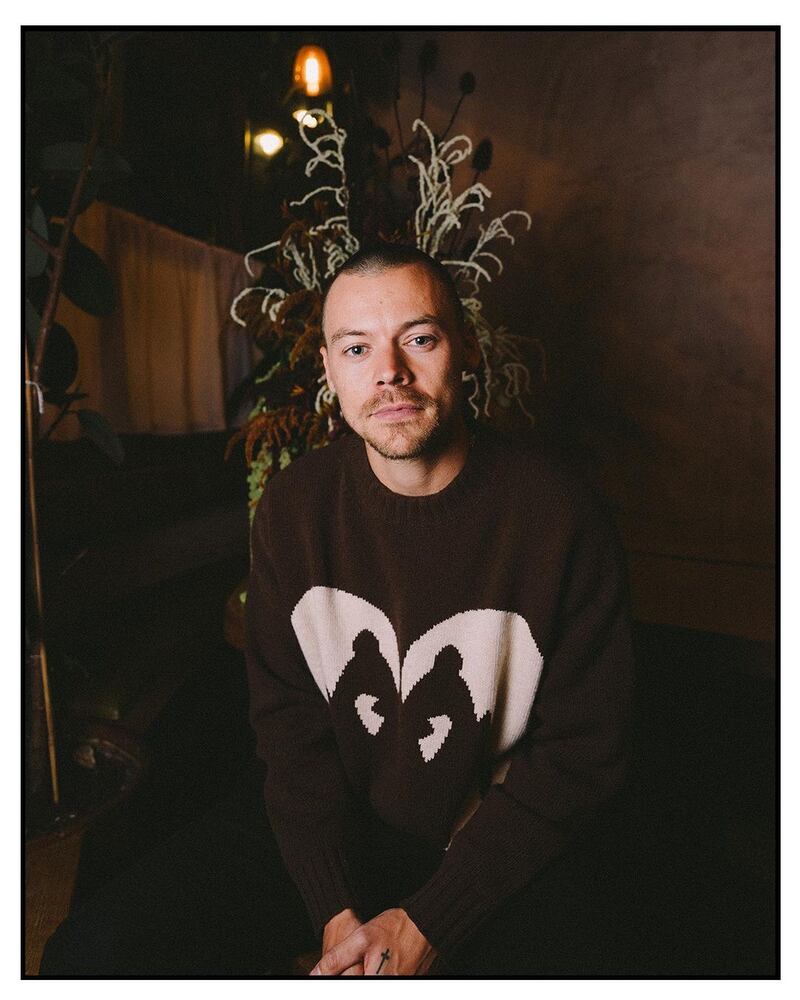When Steve Thomas (55), now professor of health policy at Trinity College Dublin, was about 15 years old, he went on a routine trip to the barber. Starting into the trim, the barber looked puzzled. He gestured to his colleagues who gathered around in curiosity. Thomas was unnerved at the quiet muttering behind his head, and asked what the matter was. “You’re actually starting to recede already,” one finally said.
“Oh great,” Thomas recalls saying. He felt deflated.
He was among about 16 per cent of Caucasian boys aged 15-17 who experience male pattern baldness. Gradually, his hairline receded backwards towards the crown.
Male pattern baldness can begin at any time in a man’s life, but, for obvious reasons, it tends to hit harder when it arrives at a young age. It can be caused by all sorts of things including stress, genetics and an increase in the hormone dihydrotestosterone (DHT), which causes hair follicles to shrink and eventually fall out.
READ MORE
“As a teenager, you’re obviously very self-conscious about yourself. I remember my dad, who [was] also bald as I am now, saying it never held him back. He came up with this classic phrase you can really only say in a Yorkshire accent: ‘No grass grows on a busy road, lad.’ That’s kind of a nice thought Dad, but it doesn’t change the reality!” Thomas says, with a laugh.
On his school rugby team, some other boys would mock his appearance, but he insists it was no more than the “slagging” everyone got. It was Yorkshire in the 1980s and Thomas felt he had no option but to let nature take its course.
“You couldn’t shave your head at that stage because that would have been really radical,” he explains. “That would be like saying I’m a skinhead, which would be associated with violence. You’d almost be making a political statement to do that.”
Most men will lose hair from their head at some point in their lives. It’s something of an inevitability. One in five Caucasian men will experience hair loss in their 20s – it’s a little less common for other population groups – and, like Thomas, some are faced with it in their teenage years.
Fear of going bald is quite common among men, and for some that fear can be quite pronounced. Hair loss has been shown to provoke feelings of embarrassment, anger, loss of confidence and a disconnect between a man’s sense of identity and his changing appearance.

While Thomas leaves things au naturel, giving him that universally recognisable horseshoe-shaped pattern, Trinity student Johann Hedlund (25) says he “took the plunge” and has been shaving his head for years now. Similar to Thomas, Hedlund had a moment of reckoning in his teenage years. He was 19 when he noticed his hairline receding.
“I was like, ‘Oh my God, it’s a physical embodiment of how I’m ageing. And I have no control over this,’” says Hedlund. “It felt just awful.”
At first, he tried to fight it. Hedlund, who is from New York, says he visited “fancy” barbers to hide the hair loss, often shaving the sides of his head to accentuate what was left on top. “I was completely perceiving it as a negative and overreacting – trying to hold on for dear life, probably for a year or two.
“Everyone when they start losing their hair go for minoxidil and finasteride [chemical compounds]. They’re the two most common options for men, and they’re marketed very heavily. There’s no cure-all for regrowing your hair. Minoxidil is a vasodilator [promoting the dilatation of blood vessels] so it makes the hair you have left thicker; and finasteride is more radical. It suppresses the DHT, the testosterone derivative that makes you lose your hair.
“You reach a point when you lose enough hair that the only option you really have is to just roll with it, you can’t really hide it any more.” So after two years of efforts, he finally shaved his head. “It was kind of freeing actually,” he says. “I could see my head and I didn’t hate it. It’s like jumping in the ocean: you just go for it, and once you’re in, it’s not that bad.”
Roe McDermott, sex and relationships columnist for The Irish Times, says, “Hair loss, like any major physical change, can really impact people’s sense of self, their self-esteem and their sense of control over their bodies and appearance, all of which can take a toll on people’s emotional and mental health.
“It can be very difficult for young men to experience hair loss in the appearance-obsessed age of social media, particularly as they often don’t have the same support systems as young women, who can talk more openly about body image issues and are offered a much wider range of products and treatments to help them address any insecurities.”
McDermott adds: “Society often deprioritises men’s confidence and mental health, offering little emotional support, reassurance or validation when it comes to their insecurities, which can leave men experiencing hair loss feeling insecure, ashamed and isolated.
“For men who are losing their hair and feeling insecure about it while dating, there are a few things to consider so you feel as confident as possible. Emotionally mature people understand that everyone’s appearance changes over time. People change their style, people gain and lose weight, people get ill and, if they’re lucky, everyone will age. While physical attraction can be important, what’s more important is understanding and accepting that life is long, bodies change and valuing partners for their personal qualities is far more important than expecting everyone to look the exact same forever.”
One style icon, singer Harry Styles, recently shaved his head – despite the fact that there was no sign his hair was receding. After he was spotted with his new “buzz-cut” at a U2 gig in Las Vegas, the TikTok hashtag #harrystylesshavedhead was viewed more than 1.5 million times, and searches for how to shave your head increased by more than 500 per cent around the world, according to Google Analytics.
Meanwhile, the number of people receiving hair restoration surgery, or hair transplants, around the world is increasing rapidly. High-profile hair transplant recipients include Wayne Rooney, James Nesbitt, and, recently, television presenter Dáithí Ó Sé.
Ó Sé revealed in November he had received a hair transplant with the Cosmetic and Hair Restoration Clinic at Bon Secours Hospital Tralee. “It’s fantastic,” the 47-year-old Rose of Tralee host told Oliver Callan on RTÉ Radio 1. “I’m delighted with myself.”
As a brand ambassador for the clinic, Ó Sé did not pay for the procedure, which can be in the €4,500-€10,000 range there. He subsequently told The Irish Sun he had understood he should not speak about it on his own programme, The Today Show.
“But it was mentioned to me after that I couldn’t talk about it on any other RTÉ platforms either. I told [RTÉ], ‘Yes, if I know the rules I will stick by them.’” He stressed he was a contract worker and not a staff member. RTÉ said it had no comment to make.
When Dr Maurice Collins founded Hair Restoration Blackrock (HRBR) in south Dublin 20 years ago, “it was a taboo subject”, he says. “Nobody would talk about it. It was like going into a porn shop... Now I find that young men in their early 20s, they’re all talking about it which is brilliant, because previously fellas had to suffer in silence.”
According to an organisationed called the International Society of Hair Restoration Surgery, the total market size for hair restoration surgery in 2021 was $4.5 billion (€4.17 billion) around the world. Although Dr Collins is not aware of any market research in Ireland, he says his business has never been busier with a three-month waiting list for an introductory appointment.
Twenty-six-year-old Ben, who did not want to give his surname, says he received a transplant from HRBR within the past year valued at €14,000. Previously, when the Limerick man started to lose hair he became “obsessed” with reversing the process.
“I kept looking at photos of myself when I was 18-19,” he says. “And I was like, ‘If only I could have that again.’ I went to HRBR for a consultation with the idea I wanted to get a transplant then and there. I met Dr Maurice Collins. He kind of laughed at me and jokingly said, ‘You need your head examined more than you need your hair examined,’ because I was so fixated on getting a hair transplant – as so many men are, especially young men trying to live up to what they see on social media.”
Ben first went on medication to prevent hair loss, but 18 months later, he was still seeing the hair recession and decided to go ahead with a transplant.

“I’m finally at a place now where I don’t think about my hair any more. That’s probably the best thing. People think when you’re going bald it’s a medical issue, it’s more of a psychological issue. You’re just seeing yourself age and you can’t regrow a full head of hair, so it’s about managing your expectations as well.”
HRBR sees a significant number of men in their late teens and early 20s, says Dr Collins. “A lot of young men read literature on the internet and social media and they get the misconception – from the commercialisation of it – that they can get a full head of hair, and their hair loss is dealt with in one transplant procedure, and nothing is further from the truth. Hair loss is a progressive condition for the whole life of the person, and it never stops.
“We would operate on only one in three, maybe one in four patients because of their suitability for surgery. If I see somebody in between the ages of 14 and 25, I’ll always think of the potential of medical treatments first before I think of surgery.”
Dr Collins’ clinic charges €10 per graft he transplants, with an average of two hairs in each graft. Often transplants will cost thousands.

When Styles debuted his buzz-cut, Ryanair’s X account responded: “interesting. in other news, we fly to turkey.” The country has become a destination for young men looking for hair transplants who are not willing to pay Irish prices – and the consequences aren’t always as intended.
“We do a huge amount of repair work on badly executed transplants,” says Dr Collins. “And the transplants coming back from Turkey are so bad now that I’ve actually stopped repairing them. They’re so badly mutilated. Every week we’re getting inquiries from around Ireland.
“It can be very damaging, and you can regret it for the rest of your life. I regularly transplant men in their 20s, but we select them very, very carefully [and] we counsel them.”
Dr Collins added: “A balding young man can shave his head, and he might not like it, but nobody else gives a bloody damn. But if he’s got a dodgy hair transplant and a hairline halfway down his forehead, it looks like the little yellow hair on the Lego man. He’s desecrated for life.”
Newstalk reporter Simon Tierney has written in The Irish Times about how what he calls the “hair transplant industry” should stop portraying baldness as a condition that needs to be cured.
Hedlund, the Trinity student who shaved his head, says: “Initially I was like, ‘Oh my God, I’m never gonna date a woman again. I’ve lost my hair, this is all over.’ And then I realised that the hair wasn’t going to change anything anyway.
“I think [hair loss] amplified how you’re feeling about yourself. If you’re feeling self-critical or kind of in a rut, you’re like, ‘Oh f**k, I’m bald, this is terrible, why has God chosen me to suffer.’ But other times you’re like, ‘Man this is so cool. I’m amazing and this doesn’t stop me at all.’ It’s probably a journey of self-love to accept it.”
For Yorkshireman Steve Thomas, he has learned to accept his lack of hair – and sometimes uses it as a tool for humour too. “It can feel quite big, but actually, at the end of the day, it’s not. People don’t think anything less of you. It doesn’t stop people from having very happy lives. There’s the perception of the stigma, but I don’t think there is so much stigma – much less now than there used to be anyway. And having a wife who says she has a ‘bald-seeking gene’ really does help too!”













